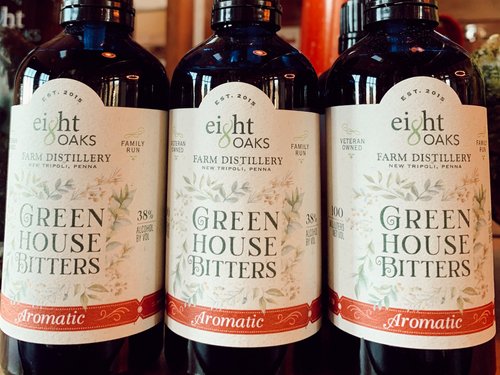What are Bitters? How to Use Cocktail Bitters in Your Drinks
Cocktail bitters are an essential part of your home bar set up. Bitters create the signature flavors in Old Fashioneds and Manhattans. But what are bitters? What are they made of? What about all the types of bitters? How do you use them in your cocktails? We break down everything you need to know about bitters.
What are Bitters Made of?
Bitters are a neutral alcohol infused with spices, herbs, fruits, roots, and other ingredients. Common ingredients include cinchona bark, gentian root, cascarilla, orange peel, and others.
Most bitters are 35 to 45% ABV (alcohol by volume), so they have a relatively high alcohol content.
The first bitter to be mass-produced was Angostura bitters. Angostura bitters are currently manufactured by the House of Angostura in Trinidad and Tobago. They originated as a medicinal tonic in 1824 in the town of Angostura, Venezuela, but their production was moved to the Port of Spain in Trinidad, where it remains today.
What do Angostura Bitters Taste Like?
Angostura bitters are spicy and bitter, with notes of cloves and cinnamon. Although the exact recipe is a closely guarded secret, we know that they are made with gentian root and other herbs and spices.
Many classic cocktails, like the Old Fashioned and Manhattan, call for a dash or two of Angostura to add bitterness and spice.
A dash is anywhere between ⅛ and ¼ of a teaspoon.
Be careful not to add too much as the bitters are strong in flavor and could overwhelm your cocktail.
Other Types of Bitters
There are many types of bitters available on the market today and people continue to find new mixtures to manufacture. Some of the most commonly used bitters, besides Angostura, are:
Orange Bitters
Orange Bitters originated in the 1800s but fell out of popularity until the 1990s when they started production again. In 2007, House of Angostura also introduced an orange bitters product called Angostura Orange.
Orange bitters are great to mix with any citrus-inspired cocktail recipe, including the classic Pegu Club. This classic 1920’s gin cocktail is sophisticated and refreshing, with a citrus and herbal finish.
Peychaud’s Bitters
Peychaud’s bitters are popular because they are a main ingredient in the Sazerac cocktail, the official drink of New Orleans. Peychaud’s bitters are sweeter than Angostura bitters, with hints of anise and mint.
Chocolate Bitters
Chocolate bitters bring a richness to cocktails with infusion of cocoa to the bitter. These bitters also typically have notes of vanilla, cinnamon, and other spices. Try mixing chocolate bitters with a sweet vermouth for your next cocktail. Or try chocolate bitters with your Old Fashioned, and use our Port Rye Whiskey for a warm and rich cocktail treat. The possibilities are endless!
Eight Oaks Bitters

Eight Oaks makes two types of bitters: Aromatic and Citrus. Our Aromatic bitters have notes of allspice and anise flavors, with a woody finish and hints of orange.
Our Citrus Bitters have even notes of orange and lemon peel. They will leave a bright citrus aroma with semi-sweet notes of lemongrass and ginger root, ending with a beautiful balance of anise star and fennel seed.
According to Co-Founder and Chief Operating Officer Carly Butters, “These bitters were the idea of our Farm Distillery & Kitchen Manager (FDK), Tessa Koss, or Mama T, as we like to call her. Our bitters are locally sourced and made, and are an important addition to our spirits line up. Over the years, Mama T always used bitters in the cocktails she created at FDK, and eventually she thought, why not create our own line?!”.
Stop in and pick up a bottle of our bitters today!
Cheers!